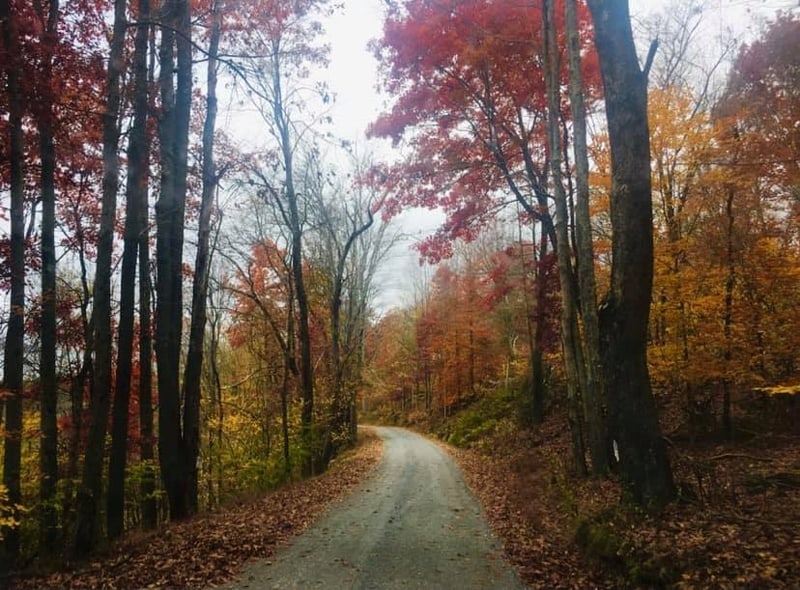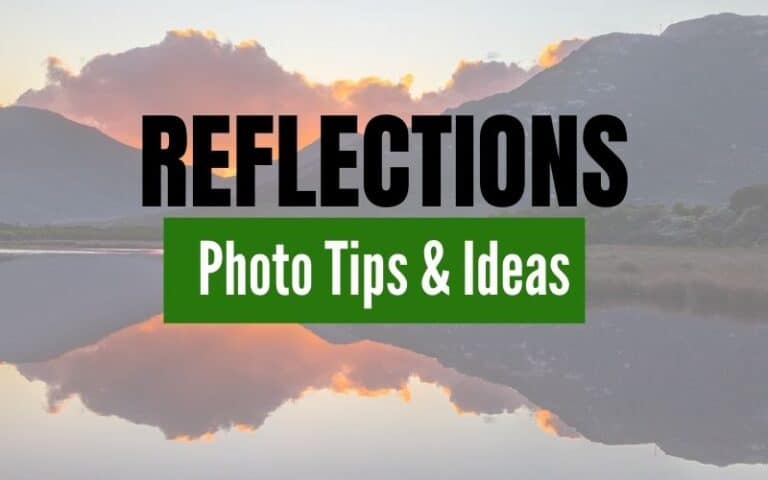Landscape Photography Ideas Using Balance
Balance in photography means the objects, tones and colors are of equal visual weight. Take a look at the landscape photography ideas using balance to help you understand this concept.
Balance is a basic photography technique used to draw the viewer’s attention to the subject areas in the image equally. We’ll show you tips and techniques to use when taking pictures of scenes with balance.

One way to take your landscape photography to the next level is to think about how you balance your subjects. Moving your body is one of the best tools for composition.
Check out the photo ideas from our photography friends to show way to find better balance in the composition of your landscape photos!
This site contains affiliate links which means WE may receive commissions for purchases made through these links. We only provide links to products we actually use and/or wholeheartedly recommend! As an Amazon Associate, we earn from qualifying purchases. Read the full Disclosure Policy.
Camera Gear for Landscape Photography
- Tripod: take a look at these compact and lightweight travel tripods!
- Camera Bag: protect your camera from sand and water → We use Lowepro camera backpacks for outdoor photography.
- Neutral density filter: to compensate for variance of light you’ll need to use a neutral density filter. → Check out the Kase magnetic filters we use!
- Camera cleaning kit: remove dust or water that WILL get on your lens. NOTE: this is not for cleaning the sensor.
- Memory cards: purchase name brand memory cards since you’re trusting your images to the card! → We use Lexar and Sandisk!
- External hard drive: copy photos to a portable external hard drive ‘just in case’.
- Headlamp: use when taking sunrise and sunset photos!
Camera Gear at B&H Photo
Photo Ideas Using Balance
Take a look at the photo ideas using balance shared by our photography friends to illustrate this compositional technique.
WATCH the video as we discuss compositional elements to create balance in each image.
Using Balance in Photography: Tips and Ideas
Take a look at these awesome photos with balance. Use the tips and ideas for inspiration to get out and photograph your own images with balance!
Symmetrical Balance
Symmetrical balance in a photograph is achieved by organizing the composition in a manner that the subject and elements of the photograph possess a sense of symmetry and equality between it’s halves or parts.

In the image above by David Joyner, the subject has been placed in the center of the composition. As the subject is moving toward the photographer, the direction and space of the subject’s movement and gaze have been accounted for in the image. This in itself creates a sense of balance.
If we draw a line down the center of the photograph the symmetrical balance of the image is more clearly illustrated.

The ram is equally presented in both halves of the image. There is a symmetry established in the other elements of the composition as well, even though the two halves are not identical.
Outside the ram, both halves of the image consist of sloping rock and grassland. The right half of the image contains more grassland and less sloping rock, while the left half of the image contains more sloping rock and less grassland.
All the elements of the photograph appear to have equal weight between the halves. Symmetrical balance is achieved.

Fiona Mccuish has composed a fantastic scene utilizing a reflection in water to accomplish symmetrical balance in her amazing photograph.
The near perfect reflection in the water casts a mirror image of the subject upon its surface.
Split by the centered horizon line, the upper and lower halves of the image balance and support each other.

Diane Kabbeko illustrates symmetrical balance very well in this stunning capture of an autumn scene.
If you picture a dividing line down the center of the photo, the symmetry isn’t identical.
But there is a striking balance in the structure of each half of the image mimicking the other with subject matter and color.
Asymmetrical Balance
Asymmetrical balance is achieved when two or more subjects or elements are placed within the photograph that bear unequal weight.
A composition containing a larger element and a smaller element may achieve balance through placement in the composition.
A larger element may also be balanced by several or many smaller elements. In the photo below by there is a large subject that immediately attracts the viewer’s eye.

The photograph also includes a large element that bears lesser weight in the foreground rock formation.
If we look at the left half of the image there is an asymmetrical balance established between the two elements of the rock formation.
And as you look at the right side of the image asymmetrical balance is accomplished with the placement of smaller elements and negative space.
When you isolate the upper or lower halves of the image we see balance in each of those parts as well. The image as a whole has accomplished asymmetrical balance.
Asymmetrically balanced compositions are more complex and may be achieved using various rules of composition and methods of balance.
In the image above there is also a tonal balance (discussed more below) in the photograph between the contrast of darker red and orange tones, and the lighter orange, pink and blue tones.

Lisa Mason has provided an example of asymmetrical balance in this tonal capture of a river scene. The subject element, the river, is balanced by the foreground and background shoreline elements.
The negative space of the blue sky and the contrast of lighter and darker tones improve upon the strong sense of balance in the photograph.

Tina Brasington shows us an example of asymmetrical balance in her desert capture focusing on a strong subject.
The viewer is drawn to the sand dunes in the midground. Balance is provided by the lesser elements of a leading line foreground, and a textured cloudy background.
All of the weighted elements direct the eye to the chosen point of interest.

Negative Space
Denise Thomason balances her subject with negative space in this very cool capture. The viewer’s eye is immediately drawn to the portion of hot air balloon occupying the upper right half of the photograph.
This is balanced by the negative space of the sky and the flagged line extending through the lower left half of the image. The photo is also balanced by the tonal contrast between the compositional elements.
Note the balance achieved between the brighter tones in the structure of the balloon, and the brighter tones in the lower corner of the blue sky.

Use of negative space as a compositional balance is wonderfully illustrated in this eye-catching photograph captured by William Davis.
The detail and texture of the mining structure is nicely balanced by the space of the misty sky. There is contrast between the darker and lighter tones that provide a sense of balance in the image.
The viewer’s eye is immediately drawn to the subject and interest maintained in the lesser weighted elements of the photo.

Tone and Color Balance
Tones and color may also provide balance in a photograph. Denise Thomason balances her beautiful composition in this simple ocean shot using the vibrant orange and yellow tones of golden hour.
The darker tones incident to the sunlit sky are balanced by the reflected tones upon the rolling waves. And the bright luminance of the sun is balanced by its reflection upon the water.
Using a centered horizon line divides the composition to showcase layers and depth.

Erica Milkovitz utilizes subtle balance with this fill the frame image of a field of flowers. The varied colors of the flowers are balanced nicely by the even green tones of the stems and leaves of the plants.
Sporadic vibrant colors in the field of greens provide not only a balance in color tones, but an elemental balance to the photograph as well.

In summation, Linda Tompkins illustrates that many forms of balance may be used to round out a composition. This wonderful capture possesses strong symmetrical and asymmetrical elements.
The surfer upon the beach centers the eye of the viewer within a balanced world of tonal and geometrical contrasts. The brighter tones above and below the horizon line, the darker tones of the beach and sky, the structure of the clouds and the reflection upon the sand all lend elements of balance to the whole.
The photograph seems to fit within the guidelines of the rules, while flirting with a subtle violation of said rules.
The best photographs reflect the balance of the three dimensional world around us upon a two dimensional canvas of illusion, casting the magic of reality upon the artful eyes of those who seek its beauty.
AMAZON Landscape Photography Books:










